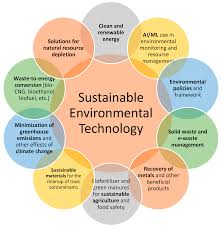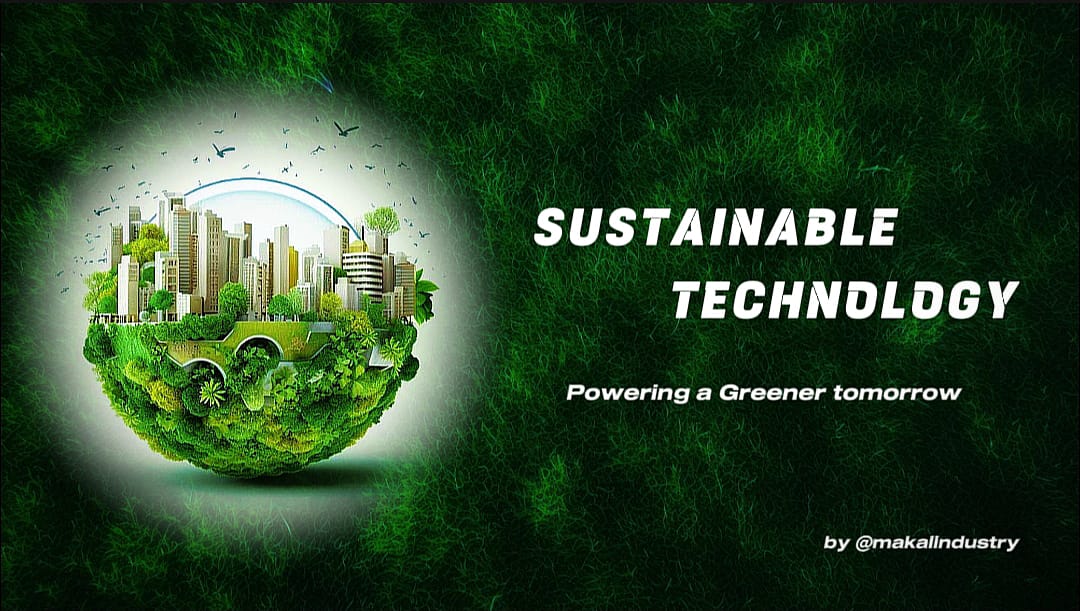Sustainable technology refers to tools, systems, and processes designed to minimize environmental harm while maximizing efficiency and social good. It’s tech with a conscience, balancing human needs with the planet’s health. Whether it’s renewable energy, biodegradable materials, or smart systems that cut waste, sustainable technology is about doing more with less.
In 2025, companies like Tesla, Microsoft, and startups like Climeworks are leading the charge, investing billions in green tech. From homes to factories, sustainable technology is becoming a global movement.
How Does Sustainable Technology Work?
Sustainable tech operates on principles of efficiency, renewability, and circularity. Here’s the breakdown:
- Renewable Resources: Technologies like solar panels or wind turbines harness natural energy without depleting fossil fuels.
- Smart Systems: IoT devices and AI optimize resource use, like smart grids that balance electricity demand.
- Circular Design: Products are built to last, recycle, or biodegrade, reducing waste. Think compostable phone cases or modular laptops.
- Carbon Reduction: Innovations like carbon capture tech pull CO2 from the air, tackling climate change head-on.
For example, a smart thermostat like Nest learns your habits, cutting energy use by up to 15%, per a 2024 Energy Star report. It’s tech that works smarter, not harder, for the planet.

Applications of Sustainable Technology
Sustainable technology is transforming industries. Here are some inspiring examples:
1. Renewable Energy
Solar, wind, and hydropower are booming. In 2025, solar panels with 25% efficiency are powering homes and businesses, per IEEE. Floating wind farms, like those off Norway’s coast, generate clean energy without disrupting ecosystems.
2. Sustainable Agriculture
Precision farming tech, like drones and AI sensors, optimizes water and fertilizer use, boosting yields by 20% while cutting waste, according to the FAO. Vertical farms in cities grow fresh produce with 90% less water than traditional methods.
3. Green Transportation
Electric vehicles (EVs) like Rivian’s R2 and Tesla’s Cybertruck are slashing emissions. Fast-charging stations powered by renewables are popping up globally. Hydrogen-powered trains in Germany cut CO2 by 100% compared to diesel.
4. Waste Management
Sustainable tech turns trash into treasure. Biodegradable plastics break down naturally, while AI-powered recycling systems, like AMP Robotics, sort waste with 99% accuracy. Carbon capture tech converts emissions into building materials.
5. Smart Cities
Cities like Singapore use IoT and AI to manage traffic, energy, and water. Smart streetlights dim when no one’s around, saving 30% energy, per a 2025 McKinsey report. Green roofs and urban forests cool cities naturally.
Benefits of Sustainable Technology
- Environmental Impact: Cuts emissions, waste, and resource depletion, preserving ecosystems.
- Cost Savings: Renewable energy and efficient systems lower bills. Solar panels pay for themselves in 5-7 years, per NREL.
- Resilience: Sustainable tech, like microgrids, keeps power flowing during climate disasters.
- Innovation: Drives new industries, creating millions of green jobs—8.5 million in renewables alone by 2030, per IRENA.
- Health: Cleaner air and water improve public health, reducing healthcare costs.
Green tech isn’t without hurdles. High upfront costs for solar panels or EV infrastructure can deter adoption, especially in developing nations. Scaling innovations like carbon capture is pricey Climeworks’ plants cost millions. Supply chain issues, like rare earth metals for batteries, raise ethical concerns. Plus, public awareness lags, with some skeptical of green tech’s impact, so education is crucial.
Why Sustainable Technology Matters
Sustainable technology isn’t just about gadgets it’s about hope. It’s proof we can innovate our way to a healthier planet without sacrificing progress. Whether you’re a business leader, a student, or just someone who cares, sustainable tech invites you to be part of the solution.
The sustainable tech market is soaring, projected to hit $417 billion by 2030, per Statista. Innovations like solid-state batteries, which charge EVs in 10 minutes, and bio-based materials, like mushroom leather, are on the horizon. AI will optimize everything from energy grids to farming, while blockchain ensures transparent green supply chains.
Policy support, like the EU’s Green Deal and U.S. tax credits, is accelerating adoption. As costs drop and tech improves, sustainable technology could make net-zero emissions a reality by 2050.
Ready to go green ? Start small: swap to LED bulbs, try a bike-sharing app, or explore renewable energy plans. Follow green tech leaders on X, check out TED Talks on sustainability, or support brands like Patagonia. The future is green let’s build it together.
